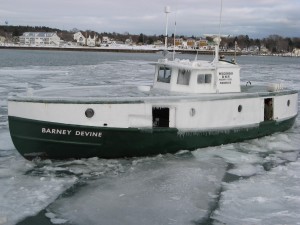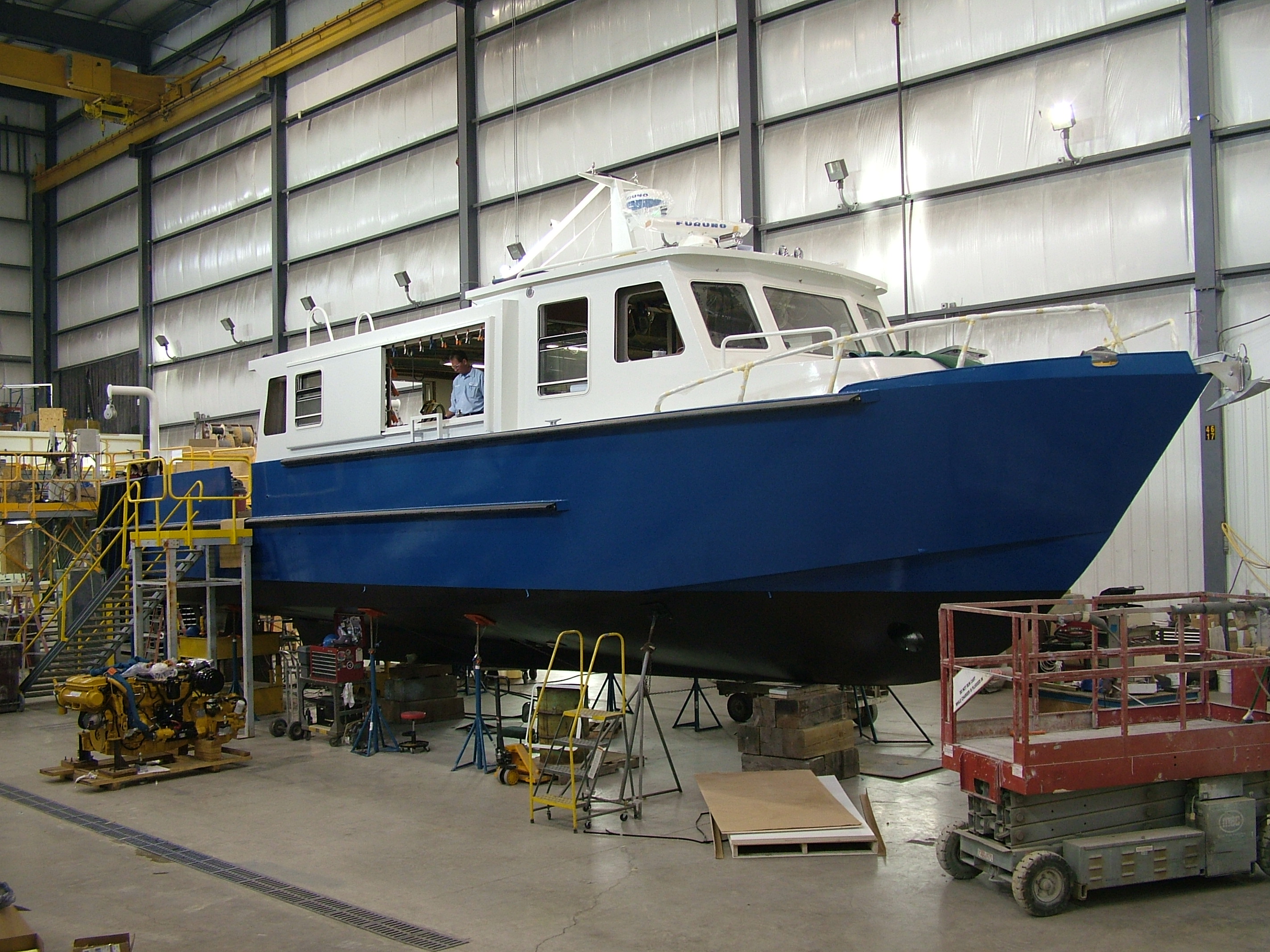
Construction on the Coregonus, the Wisconsin DNR's new Lake Michigan research vessel, finished in late January. Photo: Paul Peeters, retired WDNR fisheries supervisor
A replacement for the Barney Devine, the Great Lakes’ oldest active research vessel, is coming just in time.
“That very old boat was just on its last leg,” said Michael Staggs, director of Wisconsin’s fisheries management bureau.
Research vessels study and monitor more than 94,000 square miles of Great Lakes water, according to the Great Lakes Association of Science Ships.
The Burger Boat Co. completed the replacement boat, the Coregonus, in late January. It will serve as the department’s Lake Michigan research vessel with a home port at Sturgeon Bay, Wis.
The nearly $2 million bill for the Coregonus was paid by fishing license fees and $500,000 in salmon stamp revenues, according to the Wisconsin Department of Natural Resources.
The Barney Devine
The 74-year-old Barney Devine served Wisconsin DNR research missions until last December. The boat sprung a leak while navigating through ice cover on its final mission to assess yellow perch populations.

The Barney Devine was the oldest active research vessel in the Great Lakes. Photo: Wisconsin DNR
Plans for its replacement started 10 years ago, as the Barney Devine’s maintenance costs increased and its research capability became outdated. Named after Chief Conservation Warden Barney Devine, the boat was first a fish tug or “gill netter” with nets to collect fish. It was later modified to perform other work.
“It’s become technologically obsolete and inefficient to use for our staff,” said Paul Peeters, the department’s retired Northeast region lakeshore fisheries team supervisor. “It really wasn’t designed for fisheries research.”
Breaking into the present and beyond
“This new vessel is going to bring us into the 21st century and also carry us well into the next century for fisheries research,” Peeters said.
Jeremy Haese, Burger Boat Co. boat manager, oversaw the build for the Coregonus. The same company built the Barney Devine in 1937.
Haese said fasteners in the new boat allow the department to remove cabinetry and gain access to the boat’s nervous system.
That helps adapt the boat to new navigation systems, fishing techniques and new technology, Haese said.
Moving past Barney Devine
New features help the Coregonus move faster and researchers study harder.
The aluminum hull will handle ice cover between four and six inches thick, Peeters said. That’s typical of a research season with the department.
Some research stations are 40 miles out in Lake Michigan, Peeters said.
The Coregonus can travel at up to 20 knots (about 23 miles per hour) compared with the Barney Devine’s 10-knot cruising speed. That lets crews get out of bad weather more quickly and reach destinations fast, said the vessel’s designer, Mark Pudlo, who is president of Sturgeon Bay, Wisc.-based Seacraft Design.
The crew can process fish while en route to other research stations with an on-board laboratory and motion-compensating scales. Barney Devine crews had to reach port before conducting research.
Other features include a combination of gillnetting and trawling equipment, a mechanical dive platform, a deck crane to load the boat, a heated working deck to prevent ice, upgraded safety features and a tube for deploying hydroacoustic equipment.
“It’s just an open tube from the lab space down into the water through which they can pass acoustical sensing devices,” Pudlo said.
The technique is possibly more efficient than netting or trawling to estimate fish numbers, Staggs said.
Studying fish populations
“The specific challenge on this boat was configuring it to serve the varied missions that they had for it,” Pudlo said.

The Coregonus was designed to meet the needs of Wisconsin DNR staff studying commercial fish populations. Graphic: Mark Pudlo, Seacraft Design.
Those missions are primarily to study commercially harvested fish populations.
“We need to know the status of the population to come up with that safe harvest limit and this vessel would be key to coming up with that limit,” said Peeters.
Among the species the department manages–whitefish, yellow perch, chub, smelt and smaller fish like the alewife, Staggs said.
The department estimates fish numbers, measures their size and calculates growth rates.
The Coregonus was named after a fish genus that includes whitefish.
“It kind of follows the traditions of Great Lakes agencies of naming their boats after fish,” Staggs said.
Moving past Barney
Dedication of the Coregonus is expected in late April, Peeter said. The crew is having a hard time saying goodbye.
But the builders expect the Coregonus to last as long as its predecessor.
“It should be a repeat of the Barney Devine,” Haese said.
